I had a few more days left in Delhi before heading back south. “Delhi Belly” illness was still in raging effect so I kept a pretty slow pace and kept it to one or two tourist sites a day along with a good amount of rest.
Qutub minar:
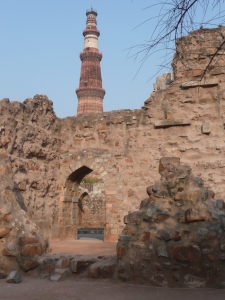
Qutub minar, a sandstone monument build in the 13th century. One of the only remaining structures from the first of the 7 cities that eventually merged together to become Delhi today.
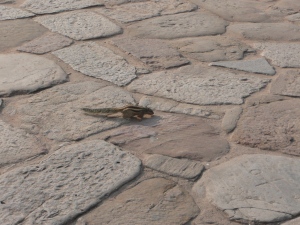
In the US, we have squirrels and pigeons all over the place at our tourist sites. In India, they have chipmunks and monkeys. For some reason, I found this highly amusing.
Delhi slum tour:

Doing a slum tour of Delhi. Very different environment here: extreme overcrowding, terrible sanitation… and ridiculously friendly people

A mural on a house. This particular slum holds people who have come from all over India for the men to work (primarily as rickshaw drivers and similar). The area is organized into mini-villages of people from Mumbai, people from Calcutta, etc, with each area having its own character. Some homes I saw had 30 people living in a house smaller than my last apartment in Chicago. It’s packed!

Local kids. Absurdly friendly. The area is known for producing artists and musicians so the kids put on a show for us. Several of them have even had the chance to perform in the US — amazing opportunity considering their living conditions! The guy they are leaning on was the tour host, who runs a nonprofit building schools in the community.
Red fort:
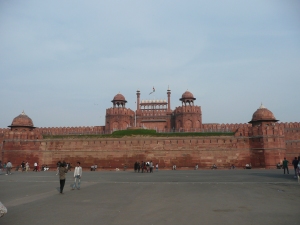
Red Fort, former capital of the Mughal dynasty which controlled the entire Indian subcontinent (present-day India, Pakistan, and Bangladesh) from the 15th to the 18th century before the British colonized India
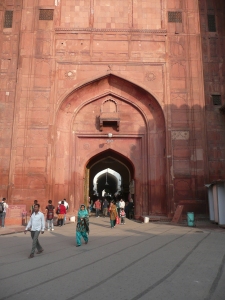
Lahore gate, which was the public entrance to the fort. Inside is a lengthy bazaar (market) followed by the main buildings of the complex. Lahore gate is so named because the entire complex is designed to face toward Lahore, a city in modern-day Pakistan.
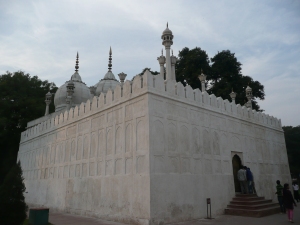
The Mughals were a Muslim empire so they have a mosque prominently inside. Since the fort complex faces toward Lahore and they didn’t want to throw off the geometry, the decision was made not to face this mosque toward Mecca as would be Islamic custom.
You may notice that there’s a lot of Muslim presence around. Indeed, much of the history of India has involved needing to nonviolently mix highly disparate cultures, including Muslim, British, and Chinese, among others. An entire religion (Sikhism) was even born from trying to reconcile the differences between Islam and Hinduism. Even within India, the variety of people and cultures is staggering. To use language as an example, each state has its own language, and some areas such as Chennai don’t have predominant use of either English or Hindi.
Imagine the equivalent in the US. Suppose we had English as a loose common thread, but there were also languages for Californian, Texan, Kansan, etc. Obviously there would be much greater difficulty in interstate commerce, as well as exacerbating existing political divisions. Anant describes it as being more like the European Union than the US in that it operates more as a loose cooperative of separate nations. Indeed, some within India have called for a separation of the different states into different countries.
Architecturally, this diversity means that you can see a mix of elements from different areas of the world combined in unique ways. One particularly famous example of that is…
Yup, a trip down to Agra to see the Taj Mahal was definitely in order. Originally I’d planned to do the “Golden Triangle” of Delhi, Agra, and Jaipur, but being slowed by illness I thought it wiser to stick to one daytrip.
As a final shining example of Indian bureaucracy, I originally tried to book the government tour going down from Delhi. It was dirt cheap and seemed to be pretty convenient. Then you actually try to book and find that they have steadfast requirements on:
-An Indian contact number (my phone is American?)
-Address verification on the credit card required a valid zip code… only it had to be in Indian zip code format. Whereupon you take a stab in the dark and hope that Mastercard understands what 060613 is supposed to mean.
-A photocopy of the credit card you used to make the purchase, because making you show the card itself would be too simple
-A photocopy of your passport
-A photocopy of your visa
-A printout of your receipt
-A phone call confirmation 24 hours in advance of the trip departing.
You should probably know that stupid rules really, and I mean really, piss me off. I ended up declaring it a lost cause and booking a separate trip with a personal driver. 4x the cost, but a small price to pay for my sanity.
Anyhow, end of rant and back to pretty pictures.
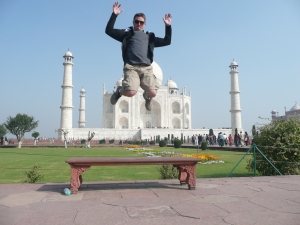
The tour guides in India get really into taking various crazy types of pictures. I’ll have to admit that this one is pretty entertaining though.
After 8 days of symptoms despite the best efforts of American medicine, I decided to give in and hit the hospital. For some reason, they decided on this aspect of the economy to make impossibly easy. I showed up looking confused where to go so I got waived into another room where… a doctor showed up and started giving treatments on the spot. No paperwork, no insurance info, just straight to business. They ended up hooking me up to an IV for some fluids and meds for a couple hours, and then discharging me at the whopping cost of $22. And what do you know, no symptoms to speak of after that day.
After leaving the hospital, I was rather in need of some comfort food upon discharge, so I hit the biggest American chain around. Never realized that a TGI Friday’s chicken sandwich could be so thoroughly delicious in the right circumstances. Refreshing.
It was interesting reflecting at the end of that day. On the one hand, it felt like a thoroughly lazy waste of a day. I had slept in until mid-afternoon, managed to do one thing all day, and hadn’t left the neighborhood. On the one hand, an absolute lost cause, and my host family continued to chastise me for not getting to enough of the tourist attractions (“enough” by their standards apparently being a picture in front of every building in Delhi). On the other hand, how often do you try out another country’s health care system? Serious cultural experience there.
Ah, the joys of travel.

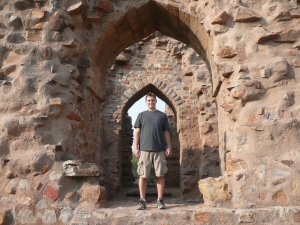
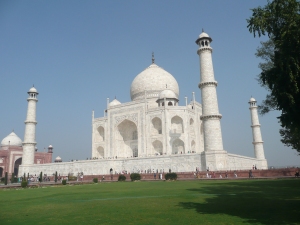
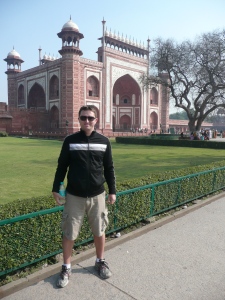

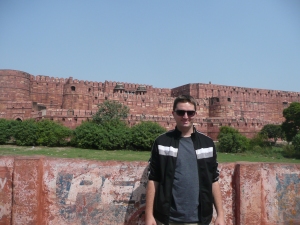
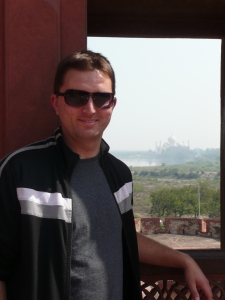
Glad you’re feeling better. Now you’ve definitely had a ‘full’ experience…
Hi Scott! Just wanted to let you know that I am loving the blog. Your pictures are great. Make them bigger!! 🙂